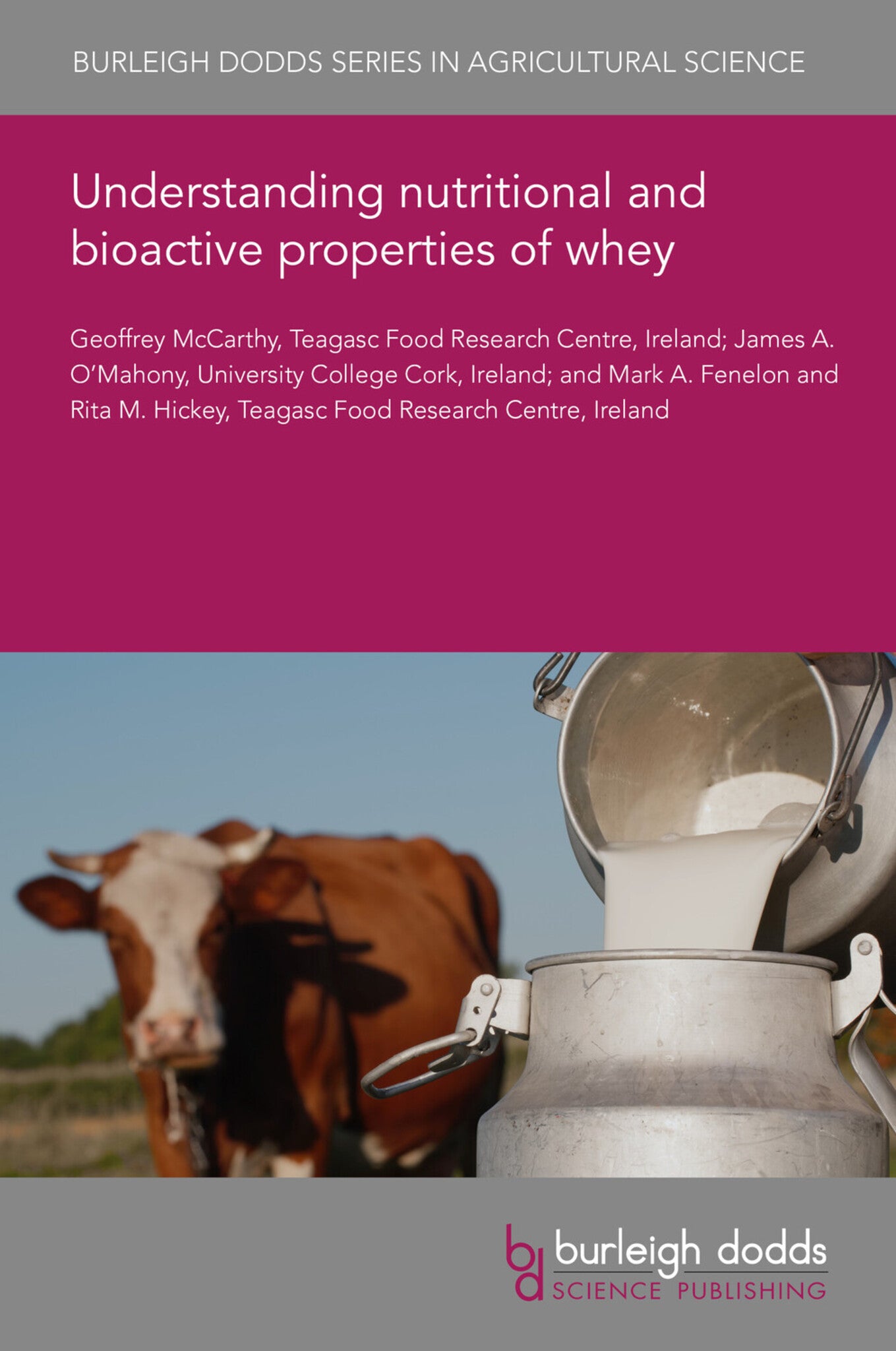We're sorry. An error has occurred
Please cancel or retry.
Understanding nutritional and bioactive properties of whey
Regular price
£25.00
Sale price
£25.00
Regular price
£0.00
Unit price
/
per
Sale
Sold out
Re-stocking soon
Whey is a co-product of cheese and casein manufacturing processes. Historically, whey was a waste product with associated challenges on disposal due to its high organic matter content and biologica...
Read More

Some error occured while loading the Quick View. Please close the Quick View and try reloading the page.
Couldn't load pickup availability
- Format:
-
14 March 2022

Whey is a co-product of cheese and casein manufacturing processes. Historically, whey was a waste product with associated challenges on disposal due to its high organic matter content and biological oxygen demand. However, with the emergence of fractionation technology, whey has gained recognition as a source of nutritional and bioactive compounds, particularly for its protein and peptide constituents. Findings from in vitro, animal and human studies demonstrate that whey in its various formats (concentrate, isolate, hydrolysate and individual proteins/ peptides) possess a range of beneficial bioactivities. This chapter summarizes the key studies that contributed to our current understanding of whey's health benefits.

Price: £25.00
Publisher: Burleigh Dodds Science Publishing
Imprint: Burleigh Dodds Science Publishing
Series: Burleigh Dodds Series in Agricultural Science
Publication Date:
14 March 2022
ISBN: 9781801464376
Format: eBook
BISACs:
TECHNOLOGY & ENGINEERING / Agriculture / Animal Husbandry, Dairy farming, TECHNOLOGY & ENGINEERING / Agriculture / Sustainable Agriculture, Sustainable agriculture, Animal husbandry

1 Introduction 2 Health benefits and applications of whey proteins 3 Major whey proteins and peptides 4 Minor whey proteins and peptides 5 Case study: application of whey enriched in immunoglobulin G 6 Future trends in research 7 Where to look for further information 8 Acknowledgements 9 References



